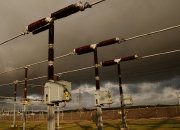QED Asset Management group (former RCAM-group)
The research within the Quantitative Evidence Driven Asset management Group develops models and methods for electric power systems within the area of asset management. One example is relating maintenance effort to system availability and total cost, another example is condition assessment for the best utilization of power equipment.

Maximal asset performance and minimal life cycle cost are important objectives for electric power system managers. These objectives are constrained by the requirements of customers and regulators concerning the reliability of power supply. The re-regulation of the electricity market has further increased the incentives for a cost effective and efficient use of available assets. Maintenance planning constitutes one tool for achieving the goals with respect to all parties. Resulting in a research area on new strategies for more effective maintenance techniques and asset management methods, interesting from both industry and research perspective.
The approach is to improve asset management methods by working with quantitative results, relating the effect of maintenance on component failure rates to the system reliability, and for comparing the costs of different maintenance strategies. The overall objective for this research group is to further develop the asset management for an optimal handling of assets in the electric power systems, as well as the own expertise in the area. The research group has the following research topics;
- maintenance planning and optimization
- reliability modeling and assessment of complex systems
- lifetime- and reliability modeling for electrical components
- dynamic rating of power components
with application areas of mainly; distribution systems, transmission components (breakers, disconnectors, and transformers) and wind power.
